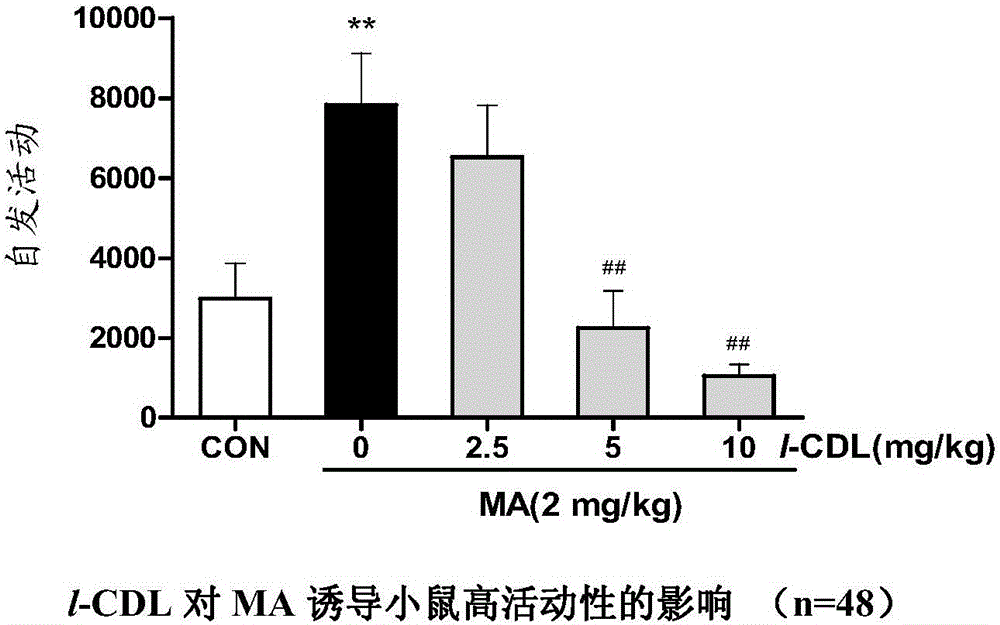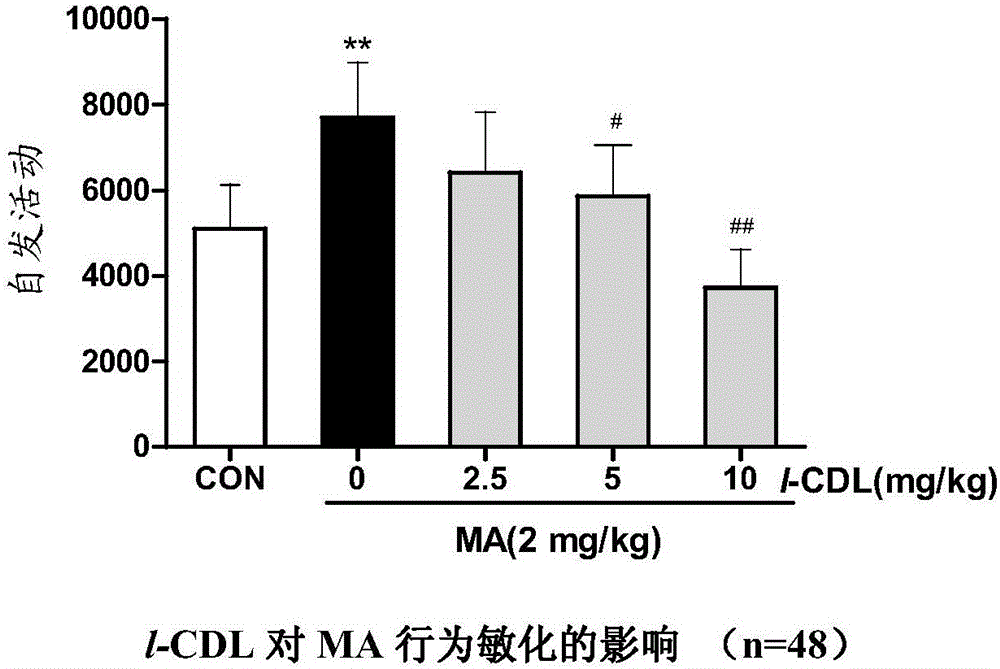Anti-addiction medical application of L-corydalmine (L-CDL)
A technology of Corydalis damming and addiction, which is applied in the field of anti-addiction medicine of Corydalis damming, and can solve problems such as clinical application limitations
- Summary
- Abstract
- Description
- Claims
- Application Information
AI Technical Summary
Problems solved by technology
Method used
Image
Examples
Embodiment
[0047] Corydalis chinensis (l-CDL) is an isoquinoline alkaloid originally isolated from the traditional Chinese medicine Corydalis Corydalis [1-2] . Through the research on the metabolism of l-THP, it is found that the product with the highest content in human plasma is 10-desmethyl sulfate conjugate, that is, the sulfate conjugate of Corydalamine, the concentration of which is equivalent to or higher than that of rotundine. The other product is the 3-desmethylsulfate conjugate. In human urine, the product with the highest content is also 10-desmethyl sulfate conjugate, followed by 3-desmethyl sulfate conjugate. It shows that rotundine works mainly through metabolism into corydalis damamine in the body. We have opened up and optimized the chemical synthesis route, and preclinical studies have confirmed that l-CDL has a dopamine receptor D 1 、D 2 、D 3 Antagonism and serotonin receptors (5-HT 1A ) agonistic effect.
[0048] Materials and methods
[0049] Experimental ani...
Embodiment 2
[0060] Embodiment 2, the impact of l-CDL on mouse methamphetamine (MA) induced behavioral sensitization acquisition
[0061] Kunming mice were administered with solvent or l-CDL for 7 consecutive days and then injected with MA intraperitoneally for 25 minutes. On the 12th day, after intraperitoneal injection of 2 mg / kg MA challenge, the activity of animals in each group was measured. The 1-h activity count of animals in MA group was significantly higher than that in solvent group (P figure 2
Embodiment 3
[0062] Embodiment 3, the influence of l-CDL on methamphetamine self-administration
[0063] Self-administration SA (self-administration SA) is an operational behavioral experiment, which uses the drug reinforcement effect to change the behavior of animals before and after exposure to drugs, simulating the process of drug addiction, withdrawal and relapse in humans . It is the most direct method to study the mechanism of drug addiction and evaluate the anti-addiction efficacy of drugs. It is the most ideal animal behavior model in the field of addiction research.
[0064] Materials and Methods
[0065] Long Evans rats, male, weighing 250-300g. Room temperature (22 ± 1) ℃, light time 8:00-20:00, free to drink and eat.
[0066] ①Venous cannulation: anesthetized with pentobarbital 40mg / kg, ligated the distal end, made a V-shaped incision at the proximal end, slowly inserted the silicone tube from the incision into the right internal jugular vein, at the entrance of the right a...
PUM
| Property | Measurement | Unit |
|---|---|---|
| Weight | aaaaa | aaaaa |
| Weight | aaaaa | aaaaa |
Abstract
Description
Claims
Application Information
 Login to View More
Login to View More - R&D
- Intellectual Property
- Life Sciences
- Materials
- Tech Scout
- Unparalleled Data Quality
- Higher Quality Content
- 60% Fewer Hallucinations
Browse by: Latest US Patents, China's latest patents, Technical Efficacy Thesaurus, Application Domain, Technology Topic, Popular Technical Reports.
© 2025 PatSnap. All rights reserved.Legal|Privacy policy|Modern Slavery Act Transparency Statement|Sitemap|About US| Contact US: help@patsnap.com



